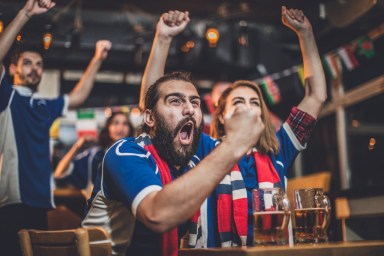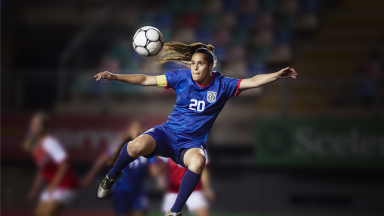Summer, summer, summertime—this is most definitely the season of hip-hop. The Essence Music Festival attracted nearly half a million attendees to New Orleans over the July 4thweekend, and a few weeks ago, the Brooklyn Hip Hop Festival filled the New York City borough with art exhibits, film screenings, panel discussions and performances (including a classic surprise appearance by Foxy Brown at the end of Common’s show).
The surging popularity of these festivals highlights the genre’s growing momentum across the board. According to the 2015 Nielsen Mid-Year Music U.S. Report, Drake’s latest album, If You’re Reading This It’s Too Late, was the bestselling digital album of the first half of 2015 and the second best-selling album overall behind Taylor Swift’s 1989. On television and social media, Fox’s Empire, a prime-time soap opera about a hip-hop mogul and his family, was a breakout hit of 2015. A total of 2.4 million Tweets were sent about the two-part finale on March 18, 2015, making it the most Tweeted TV series episode this season, according to Nielsen Social.
This deep and growing interest in hip-hop presents a prime opportunity for brands. According to Nielsen N-Score data, a proprietary metric that assesses a celebrity’s potential for partnerships based on awareness, likeability and a host of other attributes including influence, hip-hop personalities more than hold their own compared to other genre-based stars. For example, Drake, who is one of the top-rated hip-hop personalities among Millennials (age 18-34), has an overall N-score of 73—higher than the average pop star (71).
Who are hip-hop fans? Nielsen’s Audience Insights report on hip-hop music reveals fanship among males 18-24 shows the largest lift relative to the general population. Hispanics and African-Americans are also more likely to be fans than the general population. Geographically, a quarter of fans live in the West, with 27% more fans in the region than the U.S. average.
In terms of behavior, hip-hop fans are at the forefront of the digital movement, with 18% saying they like to be among the first to buy new media technologies. This fan base is also more likely than the average to be interested in gaming/purchasing gaming consoles.
The digital-savvy hip-hop audience relies heavily on digital streaming outlets—especially video—for music consumption. In fact, according to Nielsen data, it was the most streamed genre of 2014.
Therefore, it should come as no surprise that the top on-demand audio-streamed album in the first half of 2015 was Drake’s If You’re Reading This It’s Too Late (409 million streams). Three hip-hop songs were also among the top 10 on-demand singles streamed (audio and video) in the first half of the year: “Trap Queen” by Fetty Wap (290 million streams), “See You Again” by Wiz Khalifa featuring Charlie Puth (251 million streams), and “Post to Be” by Omarion featuring Chris Brown and Jhene Aiko (147 million streams).
However, not everything is new school with hip-hop fans. While YouTube, Pandora and Facebook play prominent roles helping to find new music, traditional AM/FM over-the-air radio remains the principal source of discovery for the audience. In fact, 46% of hip-hop fans have found new music on the radio.
Fans also enjoy in-person experiences. A hip-hop fan’s average annual music spend exceeds the typical U.S. consumer by 35% ($149 vs. $110), with festivals and club events accounting for the increased share. In other words, for the hip-hop audience, music is not a solitary endeavor but instead a social experience best enjoyed with others.
This love of community applies online as well; hip hop fans show a particular affinity for engaging on social media—especially on Instagram, Snapchat and Vine. The good news for marketers is that this young, large and growing hip-hop audience is very responsive to various forms of engagement across multiple digital channels. For instance, 28% of fans show increased favorability when a brand sponsors a live chat via a social network (i.e., Twitter or Goggle+) with an artist.
Methodology
Insights in this article are based on the 2015 Nielsen Mid-Year Music U.S. report for the six-month period of Dec. 29, 2014-June 28, 2015, Nielsen N-Score (fielded as of July 1, 2014 for Drake), and Nielsen Audience Insights Report Hip-Hop Music. Identifying the target profile of the hip-hop fan was done by utilizing Nielsen’s Music 360 U.S. study. This is a comprehensive in-depth look at consumer interaction with music in the U.S. The data for this study was collected in September 2014 among 2,581 respondents. This data is then weighted to the U.S. Census population based on age, gender, race, education and household size. The hip-hop fan profile is then constructed by distinguishing those respondents who identified as often listeners of hip-hop music. Further music listening habits and consumer behavior is then tabulated against this target using additional Nielsen tools and services, as well as other data based studies.



